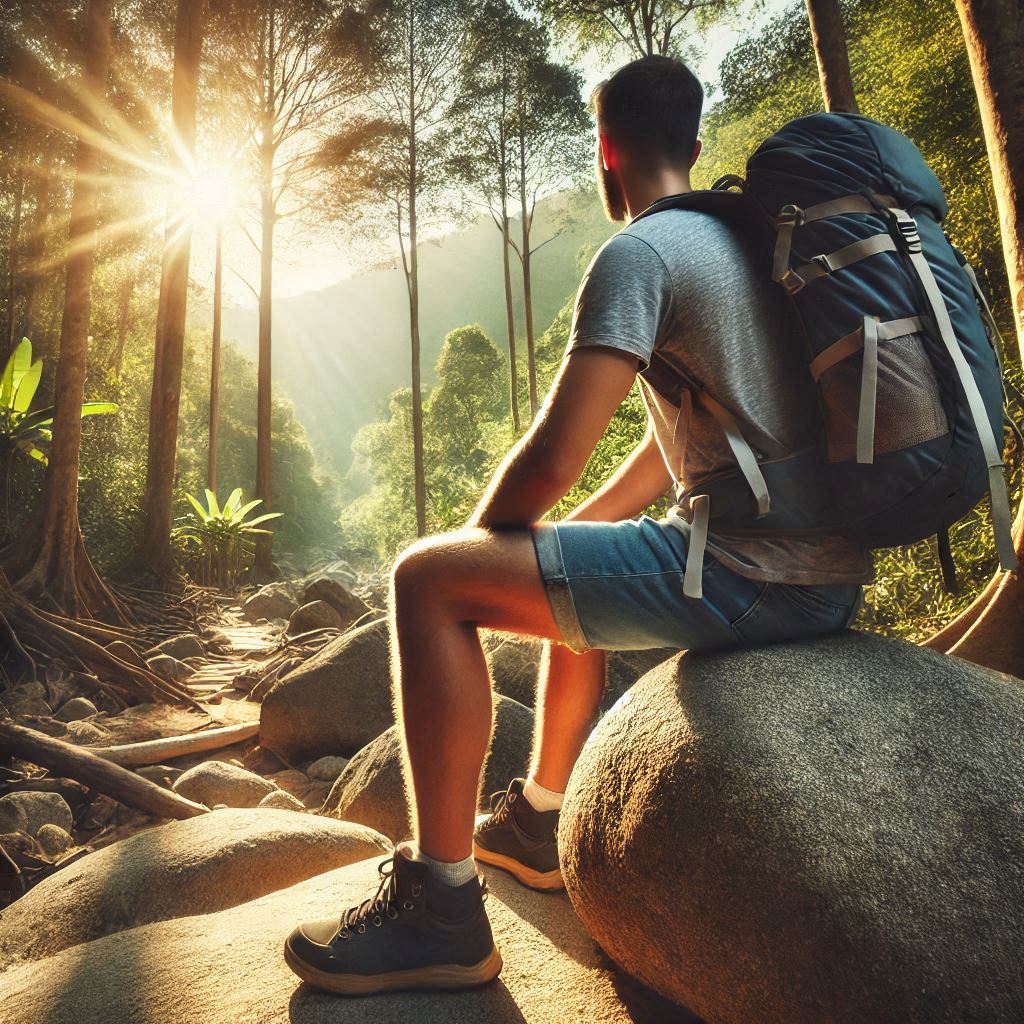Ambulophobia
Fear of Walking
Jump to the Article

Ambulophobia, the fear of walking, might sound like something out of a bizarre fantasy novel. Imagine, if you will, a world where the simple act of putting one foot in front of the other is a terrifying ordeal. While the concept of fearing walking itself might seem a bit outlandish, the anxieties that could be lumped under the "Ambulophobia" umbrella are quite real. Perhaps it's not the act of walking itself that's frightening, but the potential for stumbling, falling, or encountering unexpected obstacles. Maybe it's the fear of the unknown destinations that walking might lead to. Or perhaps it's a more profound fear of leaving one's comfort zone, symbolized by the act of taking a step. Whether it's a legitimate, formally recognized phobia or a quirky term for a more nuanced set of anxieties, Ambulophobia certainly paints an intriguing picture of the human experience (Ambulophobia is not a formally recognized psychological diagnosis).
A Journey of a Thousand Miles Begins with a Single Step
Walking. It's something we often take for granted, a simple act that seems so effortless. Yet, this fundamental human ability is a marvel, a testament to our incredible bodies and minds. From the wobbly first steps of infancy to the invigorating hikes of later life, walking remains a cornerstone of our physical and mental well-being.
The Miracle of Early Steps
Learning to walk is a monumental achievement for a baby. It's a period of intense exploration and discovery, filled with tumbles, triumphs, and the unwavering support of loving parents. Those early steps, though seemingly small, represent a giant leap forward in a child's development. They unlock a world of possibilities, allowing for greater independence and a deeper understanding of their surroundings.
Walking Through Life: A Lifelong Adventure
The benefits of walking extend far beyond infancy.
- Cardiovascular Health: Walking is a fantastic way to improve and maintain cardiovascular health. It strengthens the heart, lowers blood pressure, and improves circulation.
- Weight Management: Regular walking can help you burn calories and maintain a healthy weight.
- Bone Health: Walking is a weight-bearing exercise that helps to strengthen bones and reduce the risk of osteoporosis.
- Mental Health: Walking provides a fantastic opportunity for stress relief and improved mood. The fresh air, sunshine, and opportunity for reflection can do wonders for mental well-being.
- Increased Energy: While it may seem counterintuitive, regular walking can actually increase your energy levels.
The Fear of Walking: When the Journey Becomes Daunting
While walking is generally a safe and enjoyable activity, some individuals may develop a fear of walking. This fear can manifest in various ways:
- Fear of Falling: As we age, the risk of falls increases. This fear can lead to decreased mobility and a decline in overall health.
- Physical Injuries: Conditions like shin splints or plantar fasciitis can make walking painful and discourage individuals from engaging in this essential activity.
- Fear of Getting Lost: This fear can be particularly prevalent in those with dementia or other cognitive impairments.
- Social Anxiety: Some individuals may feel anxious about walking in public spaces, fearing judgment or social interaction.
Footwear: The Foundation for Every Step
Choosing the right footwear is crucial for both walking and hiking. You will thank yourself for the money spent on good shoes.
- Walking Shoes: Look for shoes with good arch support, cushioning, and flexibility. Consider the type of terrain you'll be walking on when making your selection.
- Hiking Boots: Hiking boots provide better ankle support and protection for more challenging terrain. They are essential for activities like backpacking and hiking on uneven surfaces.
Walking and hiking websites for people who want to explore the world around them.
- AllTrails: https://www.alltrails.com/ - A very popular app and website with a massive database of trails, user reviews, photos, and maps. You can filter by difficulty, length, and other criteria.
- HikingProject: https://www.hikingproject.com/mobile-app - Another excellent resource with detailed trail descriptions, photos, and maps. They also have a strong community aspect.
- TrailLink: https://www.traillink.com/ - Focuses primarily on rail-trails and other multi-use paths, which are often easier and more accessible.
- The Hiking Life: https://www.thehikinglife.com/hikes/ - A website with articles, gear reviews, and a directory of hiking resources.
- American Hiking Society: https://americanhiking.org/ - A non-profit organization with resources for hikers of all levels, including trail information, safety tips, and advocacy initiatives.
In Conclusion
Walking is a gift, a simple yet profound activity that enriches our lives in countless ways. From the first tentative steps of a child to the invigorating hikes of later life, walking remains a cornerstone of our physical and mental well-being. By embracing the joy of walking and taking the necessary precautions to ensure our safety and comfort, we can all experience the many wonders of this fundamental human activity.
Sources
- "Walking: Trim your waistline, improve your health" - Mayo Clinic. Accessed January 20, 2025.
- "Walk this way: How to make walking all the cardiovascular exercise you need " - UCLA Health. Accessed January 20, 2025.
- "Can Walking Help You Lose Weight?" by Anna Gunther. Yale New Haven Health. Accessed January 20, 2025.
- "Prevention - Osteoporosis" - NHS. . Accessed January 20, 2025.
- "One small step: The mental health benefits of walking outside" by Sara McCloskey. VCU Health. Accessed January 20, 2025.
- "About Older Adult Fall Prevention" - CDC. . Accessed January 20, 2025.
- "Is it normal for me to feel extremely anxious, even to walk into a small group of people?" - 7 Cups. Accessed January 20, 2025.
- "Hiking Boots vs. Hiking Shoes vs. Trail Runners: Choosing What's Right for You" - Appalachian Mountain Club. Accessed January 20, 2025.
